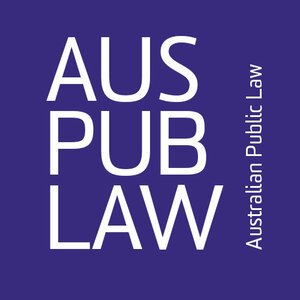
Index
- November 2025 4
- October 2025 1
- September 2025 1
- August 2025 1
- July 2025 2
- June 2025 1
- May 2025 2
- March 2025 2
- February 2025 2
- January 2025 1
- November 2024 5
- October 2024 2
- August 2024 3
- July 2024 2
- June 2024 4
- May 2024 1
- April 2024 5
- March 2024 5
- February 2024 4
- January 2024 2
- December 2023 5
- November 2023 7
- October 2023 4
- September 2023 5
- August 2023 3
- July 2023 5
- June 2023 3
- May 2023 5
- April 2023 3
- March 2023 5
- February 2023 9
- December 2022 9
- November 2022 3
- October 2022 7
- September 2022 4
- August 2022 8
- July 2022 3
- June 2022 4
- May 2022 9
- April 2022 7
- March 2022 2
- February 2022 5
- December 2021 7
- November 2021 12
- October 2021 9
- September 2021 14
- August 2021 9
- July 2021 5
- June 2021 9
- May 2021 4
- April 2021 3
- March 2021 13
- February 2021 7
- December 2020 1
- November 2020 4
- October 2020 4
- September 2020 5
- August 2020 5
- July 2020 8
- June 2020 5
- May 2020 11
- April 2020 6
- March 2020 5
- February 2020 3
- January 2020 1
- December 2019 1
- November 2019 3
- October 2019 2
- September 2019 2
- August 2019 4
- July 2019 2
- June 2019 2
- May 2019 5
- April 2019 8
- March 2019 2
- February 2019 3
- December 2018 1
- November 2018 9
- October 2018 2
- September 2018 5
- August 2018 3
- July 2018 3
- June 2018 2
- May 2018 5
- April 2018 7
- March 2018 3
- February 2018 4
- December 2017 3
- November 2017 7
- October 2017 4
- September 2017 3
- August 2017 3
- July 2017 1
- June 2017 3
- May 2017 2
- April 2017 3
- March 2017 4
- February 2017 3
- January 2017 1
- December 2016 3
- November 2016 4
- October 2016 2
- September 2016 1
- August 2016 3
- July 2016 1
- June 2016 3
- May 2016 3
- April 2016 4
- March 2016 4
- February 2016 3
- January 2016 1
- December 2015 2
- November 2015 4
- October 2015 4
- September 2015 4
- August 2015 3
- July 2015 6
- June 2015 6
Public Meaning and Private Communications: A Sidebar to Ravbar
Julian R Murphy
The High Court’s decision in Ravbar v Commonwealth [2025] HCA 25 raises a number very large questions, including as to proportionality testing in different fields of constitutional law, ‘reading down’ constitutional purposes, and the constraints of precedent on a single Justice of the High Court. In amongst those headline matters one might easily overlook another issue that divided members of the Court – the relevance of private communications to the interpretation, and judicial review, of legislation. This issue might seem niche, but the use of private documents in legislative deliberation is in fact relatively common.
Could For Women Scotland Impact How Australian Courts Understand What ‘Women’ Means?
Nina Dillon Britton
On 16 April 2025, in a unanimous decision, the UK Supreme Court found that, for the purposes of the Equality Act 2010 (UK), ‘sex’ means one’s biological sex at birth and ‘women’ means only people who were female sex at birth: For Women Scotland Ltd v The Scottish Ministers [2025] UKSC 16. The Court rejected the Scottish Ministers’ contention that transgender women with gender recognition certificates were ‘women’ for the purposes of the Equality Act (as well as the corollary, that ‘men’ included transgender men with such certificates). The effects of the Supreme Court’s decision will be deeply felt by transgender people in the UK, and the judgment will no doubt be subject to significant critical analysis.
This blog post concerns the question of whether the ruling in For Women Scotland has relevance in Australia, and particularly whether it might influence Australian courts in interpreting the Sex Discrimination Act 1984 (Cth)—the rough federal equivalent to the Equality Act. The issue is a live one. Last year, the construction of the words ‘woman’ and ‘sex’ were considered in the context of a gender identity discrimination claim brought by a transgender woman against an app marketed as ‘female-only’: Tickle v Giggle for Girls Pty Ltd (No 2) [2024] FCA 960 (Tickle v Giggle (No 2)). The Federal Court’s conclusion that ‘sex’ (in its ordinary meaning) was changeable, and thus that the complainant’s discrimination claim was successful, is currently under appeal. Similar questions of construction have also been raised in a decision by the Administrative Review Tribunal to uphold a decision by the Australian Human Rights Commission not to grant an exemption to a lesbian group, which sought to hold events that would exclude transgender women: Lesbian Action Group and Australian Human Rights Commission [2025] ARTA 34. That decision is currently the subject of a judicial review application in the Federal Court.
Public works and private duties – the roles of the judiciary and the legislature in Attorney-General (Tas) v Casimaty [2024] HCA 31
Patrick Hossack
On the outskirts of Hobart Airport, where Holyman Avenue and Cranston Road meet the Tasman Highway, construction is set to begin on a new interchange. A Parliamentary Committee has considered and reported on the plans, clearing the way for work to begin. An aggrieved resident, claiming an interest in land adjacent to Cranston Parade, alleges that the works to be undertaken are not in fact the works that were considered by the Committee—the costs don’t add up, the roundabouts are absent, the works are in fact unlawful. This resident takes action against the contractors to prevent them proceeding. The State intervenes, seeking in turn to prevent the Court interrogating the contents of the Committee report to ascertain if the works contained within it are those same works currently taking place on the outskirts of Hobart Airport. The Committee has reported, and there can be no assessment of the contents of that report to contrast with the actual bitumen being laid under its auspices—even if the roundabouts are missing.
Tidying our house of law: bringing the Marie Kondo philosophy to the Commonwealth statute book
William Isdale and Nicholas Simoes da Silva
Last year marked the 120th anniversary of the Commonwealth statute book – an anniversary that offers an opportunity to reflect on the house of law we have built. There is much to be proud of: a house constructed from the timbers of Parliamentary sovereignty, with strong constitutional foundations.
Re-enacting ‘plainly wrong’ interpretations - a divided High Court in Director of Public Prosecutions Reference No 1 of 2019 [2021] HCA 26
Joseph McDonald
On 1 September 2021, the High Court handed down its judgment on a novel question of statutory interpretation in Director of Public Prosecutions Reference No 1 [2021] HCA 26 (DPP Reference No 1). The question for the Full Court was the interpretation of s 17 of the Crimes Act 1958 ...
Book forum: Alan Robertson SC
Alan Robertson SC
Dr Amanda Sapienza’s Judicial Review of Non-Statutory Executive Action is an important work because it has as its centre of attention non-statutory executive action, rather than dealing with it, however well, in a more general context of public law. In this second category I would include, for …
Statutory interpretation under section 48 of the Human Rights Act 2019 (Qld): the first eighteen months
Benedict Coxon
On 1 January 2020, the Human Rights Act 2019 (Qld) (QHRA) entered fully into force, including the interpretive provision contained in s 48, which was modelled on s 32 of the Charter of Human Rights and Responsibilities Act 2006 (Vic) (Charter) and s 30 of the Human Rights …
Superimposing private duties on the exercise of public powers: Sharma v Minister for the Environment
Ellen Rock
In May of this year, Bromberg J in the Federal Court handed down a key decision in climate change litigation which has made waves both within Australia and internationally. Sharma v Minister for the Environment [2021] FCA 560 was a negligence claim commenced in connection with an application to expand …



![Public works and private duties – the roles of the judiciary and the legislature in Attorney-General (Tas) v Casimaty [2024] HCA 31](https://images.squarespace-cdn.com/content/v1/6153fe0470ebd0659ee01575/1738492087850-6U7LDQ4M92LP1CYKUK0P/Patrick+Hossack+headshot.jpeg)

![Re-enacting ‘plainly wrong’ interpretations - a divided High Court in Director of Public Prosecutions Reference No 1 of 2019 [2021] HCA 26](https://images.squarespace-cdn.com/content/v1/6153fe0470ebd0659ee01575/1642677494643-8HYUV1655AOILW9C8BFM/Joseph-McDonald-300x201.jpeg)


